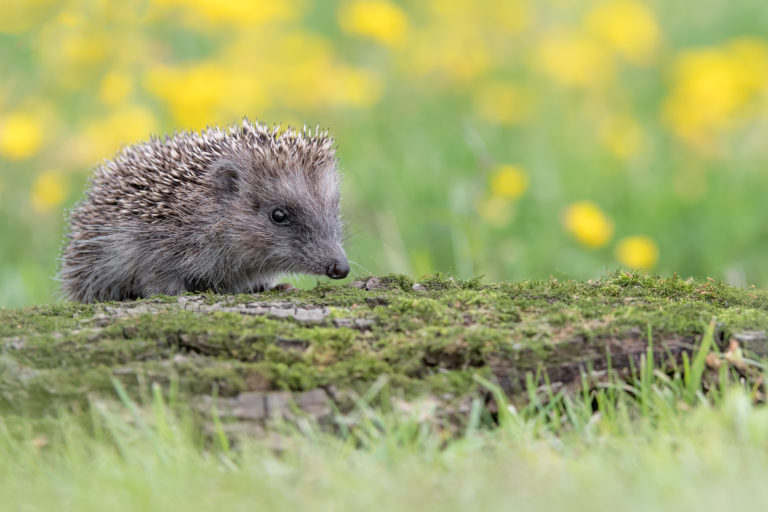July is a great month to get glimpses of owls as they search longer and harder for food for their ever-demanding, growing chicks. Listen out for the ‘twit twoo’ of the tawny owl or scan the skies for the translucent glow of the barn owl, sometimes known as the ‘ghost bird’.
Insects are out in abundance too. Strolling along country lanes you may hear the rhythmical seesaw of the grasshopper as it perches on a blade of grass, rubbing its hind legs together to attract the opposite sex. Frothy, cream flower heads of meadowsweet entice yet more insect life and the foxglove with its tall stem full of purply pink, bell-shaped flowers often plays host to bumblebees.
Bats are most active at this time of year and many mothers are still suckling young. A garden with a good variety of plant life will attract these mammals and you may be fortunate to see their aerial acrobatics at dusk as they hunt airborne insects using echolocation. July is also the busiest mothing month of the year. These night-time pollinators come out of their daytime hiding places to feast on plant nectar, or even over ripe fruit. Far from dull and boring, they come in an array of colours and sizes: the tiger moth with its bold fiery orange geometric patterns, the elephant hawk moth measuring up to 8cm in length with its olive and pink wings. Surprisingly, these bright colours can provide effective camouflage amongst the foliage or act as a warning to would be predators.
This is also a great time of year to spot baby hedgehogs. Little hoglets may be heard snuffling about in the garden especially near wilder areas or log piles seeking our tasty bugs or other invertebrates.
Do: Allow some blackberry bushes to flourish in the garden, perhaps potting them to restrict their infamous meanderings. Their flowers not only provide an excellent food source for butterflies, bees and some attractive beetles such as the longhorn but also yield tasty fruit in the autumn months.
Get involved: Dragonfly week https://british-dragonflies.org.uk/what-we-do/outreach-projects/dragonfly-week/


